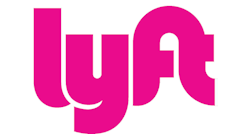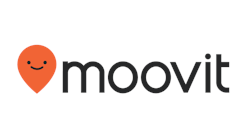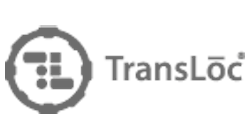Baltimore, Md.
Paul Comfort
Administrator and CEO
Maryland Transit Administration
One of the longest running challenges for any transit agency is how to effectively get riders from their front doors to the nearest transit stop. Too often, transit riders have encountered numerous challenges while attempting to reach the closest bus stop, light rail platform or subway station. Disconnected sidewalks, poor crosswalks, inadequate bike facilities and a lack of modern car-sharing options can create real hurdles for riders.
At the Maryland Transit Administration (MTA), we have launched BaltimoreLink: a $135 million comprehensive transit improvement plan that is re-imagining how people get to jobs, entertainment and life’s opportunities in the Baltimore area. Using current and projected population and job trends, ridership patterns and route performance data, we are undertaking a transit system redesign that will better connect our local bus, light rail, metro subway, commuter bus and MARC train services. An important component of the plan includes significant investments to address first and last mile challenges and identifies a variety of ways to improve how we can better connect our riders to MTA services.
We start by improving the pedestrian experience with better wayfinding and signage around stops and stations. We are working closely with local jurisdictions to improve crosswalks and sidewalks around key transfer facilities, which are essential to make passenger trips safer and more enjoyable. Perhaps most importantly, we are replacing all 6,500 of our bus stop signs with new, easy-to-read route information that will help guide our riders to their destinations.
Biking is a healthy alternative to bridge the gap between home and the nearest transit stop and a key part of the BaltimoreLink program. We are working with the Baltimore City Department of Transportation on its newly awarded bikes hare program and will soon have bike share docks at 10 of our light rail and metro subway stations in downtown Baltimore. We are also currently working to bolster the amount of bicycle parking options by installing bike racks at all of our 83 MTA rail stations throughout the state, as well as promoting proper bike-locking techniques through signage on our bike racks.
We want to be sure our fleet is bike-friendly too, which is why MTA passengers are able to bring their bicycles on all of our light rail and metro subway vehicles. We have bike racks on 100 percent of our local bus fleet. Not only are folding bicycles allowed on all MARC commuter trains, but we have retrofitted many of our train cars with bike racks that serve all MARC Penn Line weekend trains between Baltimore and Washington, D.C.
In addition to walking and biking, we want to be sure that modern car-sharing services are also an option for our riders. MTA is partnering with Baltimore City and private property owners to establish Zipcar facilities at our rail stations. In addition, MTA is also actively developing a microtransit pilot program to make mass transit more appealing to our tech-savvy riders. This flexible service will complement existing services where we might have overcrowding, or provide trips where we simply don’t have the resources to serve a particular geographic area.
When it comes to the first and last mile, we at the MTA are breaking down the barriers that exist by allowing our customers to easily access their closest transit stop. This is only one part of the BaltimoreLink plan designed to provide our customers with safe, efficient and reliable transit, with world-class customer service.
San Francisco, Calif.
Alex Mackenzie Torres
CMO
Moovit
With more than 8 billion people in the world and only 900 million cars, we’re learning that the one person, one car model is not a sustainable or even desirable one for the future of urban mobility. More and more people are shifting their dependency toward public transportation, relying on buses, trains and other publicly owned modes of transit to move about their cities. But beyond just a reliance on public transit to get around, there is a greater need for multi-modal options and shared-mobility solutions as cities and their surrounding areas become increasingly crowded. This begs the question of how transit agencies can help to provide these kinds of solutions in a cost-effective manner.
Rather than expending effort providing new technologies and mobility solutions for transit riders, transit agencies are generally better off focusing on what they do best: moving people from point A to point B. There are a number of third-party apps and technology companies that focus on the multi-modal aspect of transportation that are already working toward greater shared-mobility solutions. It is by partnering or integrating with these kinds of companies that transit agencies can help to shape the future of urban mobility without incurring a large cost.
At Moovit, our goal is to provide users with access to all of their local transit options in a single app so that they only need one source of information about how to get around their cities or towns. In many urban areas, we provide real-time data about lines and schedules for all available options like trains, buses, light rail, and ferries, while also integrating a number of shared-mobility options like bike sharing and car sharing services like Uber. Users have the freedom to choose which of the available transit methods best suits them for that particular journey, while also having the flexibility to choose to take multiple modes of transportation for a single trip.
For a transit agency to create their own technology linking all these shared-mobility options would be a great undertaking, not only in terms of manpower and resources, but also from a financial standpoint. However, publicly funded transit agencies can benefit from partnering with apps and other companies in the private sector that have already done the legwork of aggregating the data from these different mobility options, with minimal spend involved. Additionally, by cooperating with technologies that implement shared-mobility services like Uber or Lyft, transit agencies can provide their riders with even more options for the first- and last-mile conundrum.
Furthermore, by integrating with technologies that have mastered the ability to scale with the crowd, transit agencies — and their riders — can benefit from the increasing addition of real-time alerts provided by the crowd, without developing any new functionality or increasing their headcount to keep up with these kinds of demands. Thus, it is by truly working together, and with the vast community of transit riders, that agencies can define their place in the future of urban mobility.
Atlanta, GA.
Benjamin Limmer, AICP
Assistant General Manager
Metropolitan Atlanta Rapid Transit Authority
Transit agencies nationwide are diligently seeking creative solutions to ensure their customers enjoy the full benefits of a car-less existence. To this end, several agencies, including the Metropolitan Atlanta Rapid Transit Authority (MARTA), have begun partnering with ride-sharing services to enhance the travel experience of our riders.
The partnership MARTA formed with Uber last year enabled us to enrich the connection our customers have to their daily lives. When customers want to reach their final destination after they have arrived at one of our 38 rail stations, it’s as easy as 1. logging onto our On The Go app, 2. clicking the Uber link and 3. choosing a time to be picked up.
MARTA’s GM/CEO Keith Parker understands the value in these types of collaborations, especially when they serve as an added benefit for our customers.
Uber is especially helpful in providing necessary connections to and from MARTA rail stations, but Uber provides service at times when transit is not operating as frequently, such as on the weekends or late at night.
We believe that ride-sharing services, coupled with MARTA, can help our customers move about the city cost-effectively and conveniently.
At the national level, last month the American Public Transportation Association (APTA) published a multi-agency report that highlighted industry trends that underscored the value-added customers found in public transit agencies partnering with ride-sharing services.
APTA’s report indicated that the more citizens use services such as Uber and Lyft, the more likely they are to use public transit, which makes this a win-win for everyone. Ride-sharing services are being viewed as a necessary supplemental service that is not in direct competition with the service MARTA and other agencies provide.
These services are a benefit to our customers, especially to locations where our service is not as robust as we’d like it to be.
We know that it’s not always convenient for our riders to walk any distance when they are tired, have kids in tow or don’t want to be in the elements. Because of this, we are even more committed to providing solutions that give our customers the ability to seamlessly manage their lives.
We see tremendous potential for creating unique value for our customers in two fundamental ways. First, MARTA will continue to integrate our services with ride-sharing opportunities that help our customers, who are our first priority. Second, MARTA will also continue exploring partnerships to provide in-fill coverage within our service area to provide new mobility options to those who currently are not within close proximity to MARTA services, all while lowering our overall cost per trip.
Charlotte, NC.
John Lewis
CEO and Executive Director
Charlotte Area Transit System
Finding ways to solve the first and last mile connectivity challenge is key to our ability as an industry to expand our ridership base. The Charlotte Area Transit System (CATS) is in the process of developing a partnership model with ride sourcing services to provide not only first-last mile connections but also to expand our mobility offerings.
Before we can determine how to best form this partnership, we believe it is important to analyze our current operating environment and our customers’ needs.
At the 2016 APTA Bus and Paratransit Conference, John Martin, CEO and President of the Southeastern Institute of Research, described the evolution of a new economic development model. The model states to first create a community where people realize a high quality of life. Those communities then attract new residents/talent and then business follows the talent. Cities that grasp this model will be at the forefront of the new economy.
In Charlotte, we are striving to make investments in our transit infrastructure to support a thriving and growing city. We must evolve our system to meet the diverse needs of many generations: Baby Boomers who are downsizing and relocating into our urban centers, along with Millennials that want to live, work, and play within their community.
In our system’s evolution we must ensure that we’re able to provide mobility options to transit-dependent people who find themselves priced out of the urban core where transit services are most prevalent.
So, what is a possible solution? Partnering with ride-sourcing companies. We’ve seen successful partnerships at transit agencies like PSTA, DART and MARTA that we can learn from. Each community has its own specific needs and challenges so there is no one-size fits all model. For CATS, we want to maximize the efficiency of our system and concentrate our limited fleet resources along corridors that we can move large numbers of people with high frequency service. By partnering with ride sourcing entities we can expand the reach and access to our services in a cost effective manner.
As we move forward in developing our model for partnership opportunities, we have to find a solution to the digital divide that exists for so many of our transit-dependent riders. An estimated 10 percent of American families do not have a relationship with a banking institution and 20 percent do not have access to a credit card. Despite the wide spread proliferation of smart phone technology there is still the question: how will some customers pay for these new mobility options?
In analyzing how CATS will implement a first-last mile partnership, we can certainly say that the opportunities far outweigh the challenges. At the end of the day, transit agencies aim to provide citizens with viable transportation options that fit into and enhance their daily lives. If we need to find creative ways to do that, then we will.
San Francisco, Calif.
Emily Castor
Director of Transportation Policy
Lyft
In recent years, commuter rail systems around the country have seen growing ridership, showing the strong appetite among consumers for the reliability of trains as a substitute for the tedium of sitting in traffic. But for many Americans, the nearest train station is too far from home to allow a carless commute, causing parking congestion at stations and preventing many drivers from choosing transit.
While buses, walking, and cycling help solve the last-mile problem for some, many suburban commuters must travel several miles to access a station, making those options impractical.
Lyft is actively partnering with transit agencies around the country to fill this gap, enabling more commuters to give up their cars entirely and taking pressure off of congested train station parking lots.
In Colorado, we’re working with the city of Centennial and Denver RTD on a pilot to provide residents and workers with free (grant-subsidized) Lyft rides to and from a suburban light rail station. RTD estimates that the passenger subsidies will cost less than the agency’s current costs for its own Call-n-Ride bus operations, while greatly improving response times for customers.
And in Portland, Lyft recently launched a partnership with TriMet to integrate real-time Lyft availability and pricing information directly into the TriMet Tickets app, enabled by moovel’s RideTap. By surfacing Lyft information in the same app where riders buy transit tickets, this partnership reduces friction for multimodal travelers, encouraging commuters to leave their cars at home. Lyft’s API makes integrations like this easily available to any agency to customize for its own digital platforms. Other similar examples include our integrations in the Xerox Go LA and Go Denver trip planning apps, and with DART’s GoPass app in Dallas.
The next wave of Lyft’s first-last mile transit partnerships will likely see even deeper integration between Lyft and transit fare systems, expanding access for the unbanked and extending Lyft’s network to those without smartphones, Meanwhile, agencies may begin to reimagine the physical design of stations for less parking and easier pickups and dropoffs. We welcome creative partnership concepts from transit agencies large and small, as we work together to bring convenient, affordable mobility to all Americans.
San Francisco, Calif.
Andrew Salzberg
Global Mobility Policy Lead
Uber
Over the last 12 months, public transportation agencies across the U.S. have approached Uber about working together to address some of their longstanding challenges. We believe this growing interest comes out of a broad strategic alignment between the goals of Uber and the goals of public transportation operators. We share the same high-level objectives: building alternatives to congested roadways; providing service to those who cannot or choose not to own their own private car; reducing emissions generated by single occupancy vehicles; making transportation more affordable and accessible for all; and bringing service to traditionally under served people and neighborhoods.
A recent report from the American Public Transportation Association (APTA) highlighted Uber’s complementary relationship with public transit. For example, Uber reaches peak demand late at night and over the weekend while transit is often the best option during weekday commuting hours. The report also concluded that a combination of Uber and transit makes it much easier for people to give up their cars than either one could on its own. Additionally, riders have been using Uber as a way of extending public transit to reach their final destination — helping to solve the so-called ‘first mile/last mile’ problem. To build on these organic uses by riders, we’re partnering directly with transit agencies and working to advance our shared objectives.
In February of 2016, the Pinellas Suncoast Authority in Florida became the first public transit agency to partner directly with a ridesharing company. As part of our partnership, riders pay $3 to take trips to or from select transit stations — with the agency picking up the rest of the fare — making the first and last mile trips affordable to riders. Uber’s technology allows the agency to target specific geographic areas making it possible for the agency to choose where they would like to provide service. This benefit allows for easy and transparent targeting of any investment from transit agencies in ride provision.
Uber is also building partnerships with public agencies to provide rides to senior citizens who are no longer able to drive. One of these pilot programs is our initiative in Fulton County, Georgia, where we are working with transit to provide free rides for seniors to and from senior centers. To accommodate all levels of technology users, riders have the option of calling in by phone and being paired with an Uber by a dispatcher. Reviews from riders have been enthusiastic and plans were recently announced to scale-up the program.
We have come to appreciate that there is no single approach that will work across every market and with every agency. Our experience to date has shown that there are different models that will help Uber and public transit achieve their goals in different circumstances. Luckily, Uber is managed by a series of local teams who are as dedicated to the success of their city as transit operators have always been. We look forward to continuing our work and innovating together to build the transportation system of the 21st century.
Durham, N.C.
Doug Kaufman
CEO
TransLoc
It’s the holy grail of transit: endlessly useful and cost-effective transportation. It may sound simple, but consider that the vast majority of people in the United States prefer walking no more than a quarter-mile to or from public transit stops — about five minutes. Today’s predominantly fixed-route transit systems place stops at predetermined locations to maximize efficiency — often requiring much more than five minutes for existing and prospective riders to get to. It’s standard practice—but it’s also eliminating what could be a significant portion of possible riders.
Thankfully, times and technologies are advancing to meet today’s demands. Transit agencies can now provide a critical link to help riders by integrating other modes of transportation with public transit. A new breed of user-friendly mobile apps tap the power of technology to make the entire trip easy, quick and inexpensive.
Imagine opening an app and simply telling it where you would like to go, then receiving the optimized path almost instantaneously. Perhaps an Uber arrives at your location — further than five minutes away from the nearest transit stop — and ferries you to the best fixed-route stop that will fit your trip needs. Your arrival at the fixed-route stop is timed perfectly with the bus, so there’s no time wasted waiting on the side of the road. You hop on the bus and travel most of the way to your destination via the most cost-effective option: existing fixed-route public transit. At the appropriate time the app buzzes, letting you know it’s time to get off the bus, where, if necessary, another Uber is pulling up to take you the rest of the way.
This fresh vision of a commuter’s utopia stands in strong contrast to existing approaches to door-to-door demand-response transit, which essentially route buses to meet riders. This requires significant investment in service delivery, planning and operations. Mobile technology can combine the efficiency of placing high-capacity vehicles in densely populated areas with the flexibility of ride-sharing services to move riders as seamlessly and cost effectively as possible, with zero operational change on the part of the agency.
Recent data from Wake County, North Carolina shows just how effective integrating public transit with other modes of travel can be. Only 28 percent of the county’s one million residents live within a quarter-mile of a fixed-route transit stop — meaning 72 percent are more than the generally comfortable distance from transit. In effect, that means many won’t use it. If we expand that radius to 3 miles — a distance you can travel for $5.00 with Uber — the percent of the population who are now potential riders jumps to 88 percent.
Transit agencies and cities have to start looking beyond the first mile / last mile problem, and instead focus on providing solutions for every mile. The key lies in helping riders not only see the potential for a multi-modal commute, but also being able to optimize these routes for seamless, reliable transfers. Minimizing time and hassle for riders maximizes the efficiency and ultimately, use of public transit.






